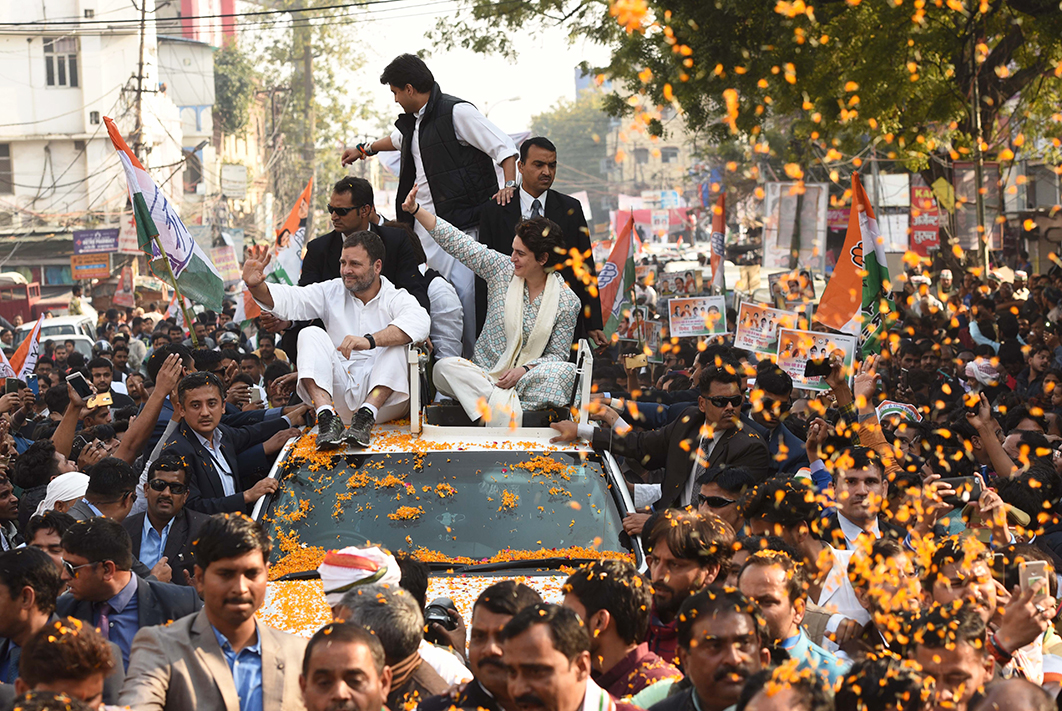Indian elections are big. Big in numbers and big in significance. The national election coming up in May will involve more than 800 million eligible voters and promises to be a crucial round in a struggle over the soul of India.
The current Bharatiya Janata Party, or BJP, government under Narendra Modi won a remarkable victory in 2014. Modi and his party promised economic development and good days ahead. The record in the past five years has been rather patchy.
Growth in gross domestic product has averaged about 7 per cent a year, a figure most countries would relish. But this has not translated into the millions of jobs that are needed for the two-thirds of the population (850 million people) under the age of thirty-five. Unemployment has increased and participation of women in the workforce has fallen.
The new national goods and services tax should facilitate movement of goods and improve revenue collection over time. But the tax is said to be a nightmare for small businesses, many of whose owners are long-time BJP sympathisers. Other economic reforms have still to show results.
Perhaps the most notable of the government’s achievements has been the Clean India campaign, a heavily publicised, top-down program to transform public sanitation. It has built tens of millions of toilets, instituted cleanliness rankings for towns and cities and funded state and local governments to improve management of waste and public sanitation. Critics point to failures of follow-up and maintenance, but never has such an effort been driven so hard from so high up. By comparison, a national health insurance scheme for the poorest people, announced a year ago, seems underfunded and more show than substance.
An opinion poll in January predicted that the BJP would emerge as the largest single party in the May election, though its National Democratic Alliance would not win a majority. But these calculations went out the window in mid February when a suicide bomber killed forty paramilitary police in the disputed state of Jammu and Kashmir. India accused Pakistani intelligence agencies and their clients of having organised the attack, and launched a bombing raid into Pakistani territory. Pakistan replied by bringing down an Indian fighter jet.
Not surprisingly, Indian patriotism became supercharged. The BJP will harness these emotions in election campaigning. The party, and organisations close to it, have long promoted an aggressive one-size-fits-all version of Hinduism and of India — or Bharat, as they’d prefer to call it. Divergence from their line is “anti-national.”
Muslims, who make up nearly 15 per cent of the population, or 190 million people, are particular targets. Sporadic attacks on Muslim “cow killers” and “beef eaters,” and intimidation of despised “secularists” and lower castes who don’t toe the line, are seldom condemned by BJP leaders. At the same time, the party has steadily inserted and promoted its sympathisers throughout the country’s institutions.
The prospects of the opposition Congress Party appeared to have improved in November after it won elections in three states. But the border crisis allows the BJP to continue contrasting “weak” Rahul Gandhi, the Congress leader, with the tough, decisive Narendra Modi.
Rahul Gandhi, the critics argue, is a product of inheritance not ability. He has three prime ministers among his ancestors, and his mother, though never prime minister, is a prime minister–maker as president of the Congress Party. The BJP characterises the Congress as a dynasty without a philosophy or program. The BJP has both: Hindu supremacy and friendship towards businesses large and small.
Champions of an older, more cosmopolitan version of India are hopeful that Rahul Gandhi has recently been showing more enthusiasm and commitment. His sister Priyanka, forty-seven, who joined the election campaign in January, may also help to revive the party.
Appealing to younger women, tens of millions of whom now have a Year 10 education or better, Priyanka could prove an attraction in many electorates. The BJP does little to hide its patriarchal beliefs and practices, and though many families may be withdrawing educated women from the workforce for reasons of status, women can — and do — vote as they please.
Voting is fair, free and simple. It’s a first-past-the-post system with ballots cast on standalone electronic voting machines. Polling will be spread over three or four weeks to allow the election commission to move administrators, equipment and security forces around the country.
Even with the increased patriotic fervour, the BJP will find it difficult to repeat its sweeping success of 2014. An unclear result, with four or five regional parties winning a substantial number of seats, could produce an unstable, anti-BJP coalition government. Its collapse would likely lead to a new election in which a frustrated electorate would turn again to the BJP.
If the BJP finds itself leading a minority government, Modi will need to reveal new abilities. For the last seventeen years, he has mostly had things his own way. He governed Gujarat for twelve years with large majorities, a supine party and a hardworking, obedient bureaucracy. As prime minister of a successful coalition, he would need to find the skills and patience of a negotiator and conciliator.
India’s federal, democratic, secular structure has enabled it to accommodate immense diversity — 1.3 billion people, twenty-nine states, twenty-three official languages, eleven different scripts, and members of all the world’s great religions. A comprehensive BJP victory in May will intensify the attempt to impose an unfamiliar cultural conformity. That may not be the wisest path for a country with a size and diversity surpassing the European Union. •
This article first appeared in East Asia Forum.




